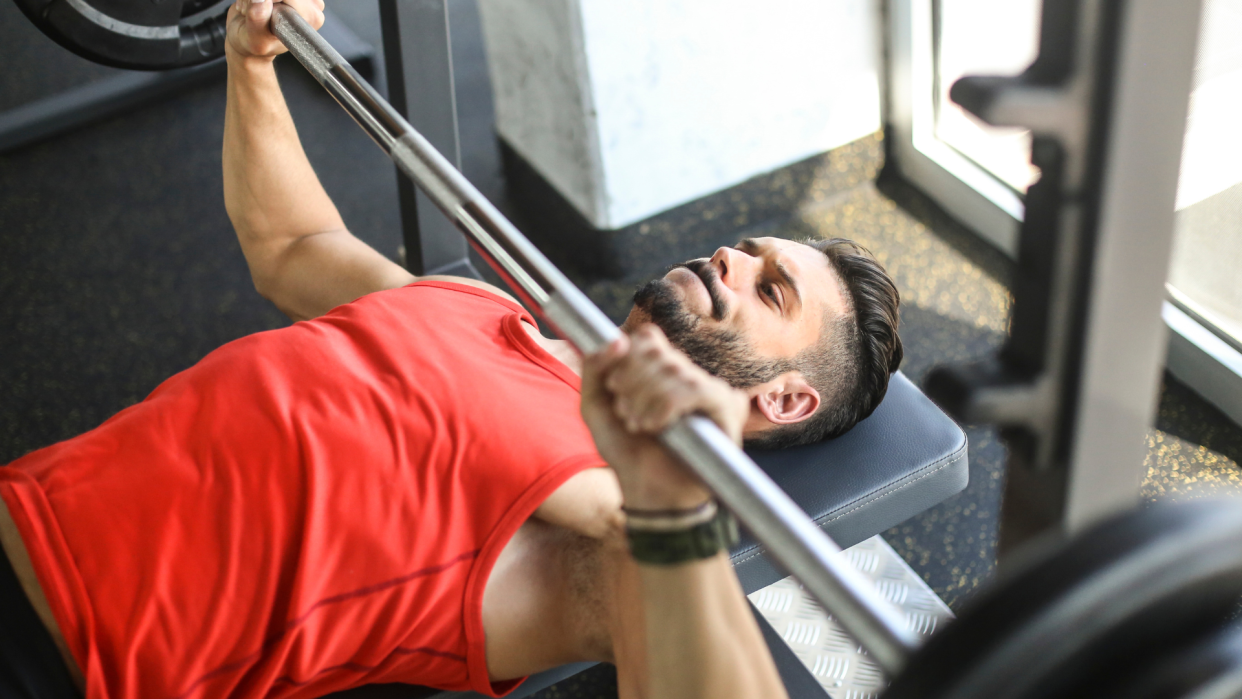Five different types of bench press and their unique benefits for strength and size

The bench press is one of the greatest strength training exercises of all time; it doesn’t matter whether you’re a powerlifter, hybrid athlete, weightlifter, or a casual gym-goer, it’s an exercise that can enhance upper body power like no other. Walk into any gym and you’re guaranteed to see at least one person led underneath the barbell trying to push as much weight as possible.
Building up your bench press can start off quite quickly however, if you’ve been doing it for a while, it’s a compound movement that people will often experience a plateau. As well as switching up your training volume/tempos, or maybe even taking a deload week, another thing you can do to overcome this is by switching up your bench press. Below we share five of our favourite variations that can help, or if you’re simply keen to change up your training.
1. Larsen press
Created by bench press specialist and elite powerlifter, Adrian Larsen, the Larsen press is a highly underrated exercise that can improve your bench strength and form. It’s performed just like a regular bench press, but instead of your feet placed on the floor, they’re out straight in front of you. Removing your legs from the equation immediately reduces your stability, so you’re forced to maintain a tight upper back and produce power only through this. When you return to your regular bench press you should then (hopefully) be able to exert far more strength and power than before.
2. Spoto press
Another variation that can also help your bench excel in strength is the Spoto press, created by former arm wrestling champ and powerlifter, Eric Spoto (who broke the previous world record benching 722lbs). The movement consists of pausing the barbell a couple of inches just above your chest, before driving it back to the starting position. This increases time under tension and helps to strengthen the concentric portion of the movement (pushing the bar upwards), which is the part that people struggle with the most.
3. Swiss bar press
This is a bench press variation you may not have heard of, because it doesn’t use a regular Olympic barbell, but a swiss bar (also known as a football bar). A swiss bar has ends that look like a normal barbell that you can load up with weight plates, but the middle consists of various handles for different neutral grip positions (where your palms face each other). It’s a great bar to use if you suffer from shoulder niggles, as the neutral grip avoids placing vertical pressure on them that the pronated grip of the regular bench does. However, be warned, you don’t need a lot of weight here.
4. Slingshot press
The slingshot press is actually where you perform a regular bench press, but wear a slingshot whilst doing it. 'What’s a slingshot?' you ask. It’s a bench press accessory tool (sort of like a resistance band but for your arms) that can, apparently, help you bench 10-15% more weight, whilst relieving the pressure from your shoulders and elbows. It’s therefore a great tool if you’re looking to overload your bench press. However, this is an accessory tool. It’s not something you should consistently use to build a bigger bench as a study has shown that using a slingshot can affect the muscle activity pattern of the flat bench press.
5. Close grip bench
Unlike the regular bench press, the close grip bench press places more emphasis on the triceps and shoulders. Both of these muscles are key for a strong bench press, but it’s our triceps that can often fall behind, therefore this exercise is great for building both. It can also be performed with a barbell, or a pair of dumbbells and if you don’t have a weight bench, you can do it on the floor.

